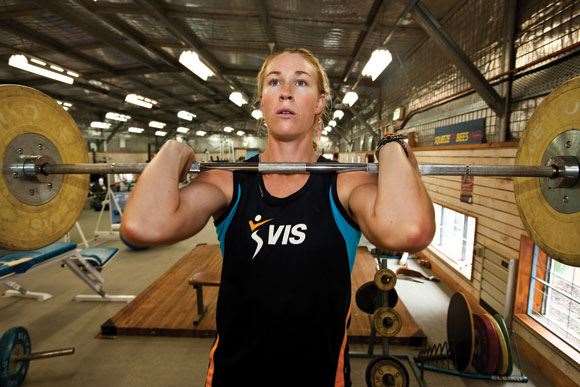Yep, we still have the world’s most determined athletes ‒ and the best metaphor-producing rowers going around.
 Photos by Warren Clarke
Photos by Warren ClarkeLEG WORK
“The power generated in our sport comes from the legs – this surprises a lot of people. When you watch rowing as an outsider, it does appear to be quite an upper-body-dominated sport. We often talk about the arms as just the linking rods; their job is to have enough tension to be able to pull the blade through the water, but all the work is actually coming from down in the legs.”
IN THE GYM
“We do a lot of deadlifts and squats in the gym ‒ real exercises to strengthen our glutes, thighs and hammies. Your body is meant to be able to hold the power in rowing. We do need strong-enough upper bodies as well to be able to hold the force going through our legs.
“The number of weekly gym sessions differs throughout the season and between different athletes. I spend a lot of time in the gym; early in a campaign its about five sessions a week for me. Early in the season our sessions are pretty long. Typically, I’ll be in there between two and two-and-a-half hours. Leading into racing, the actual strength component of a session is a bit shorter, but we do tend to have a lot of pre-hab and re-hab exercises in there as well. We use our gym sessions for the dual purpose of getting stronger and making sure we don’t get injured; injury prevention-kind of exercises can take quite a while.
“At the racing time of year, I’d be down to three gym sessions per week. The idea behind that is to put on a bit more muscle bulk, to gain a bit more extra strength. Some of the other stronger rowing girls down here spend extra sessions outdoors on bikes or running, rather than being in the gym.”
BY THE NUMBERS
“We do more work on the Ergometers early in the year. They’re a great tool to really get your fitness up: these machines don’t lie. We call the Ergo the ‘truth machine’. One of them in particular we call ‘The Ergo of Death’. There’s no other way of explaining it.
“At this time of year, we do two sessions a week on the Ergos. The wattage you sit on is chosen according to your physiology and your personal best performances. It’s chosen at a level that you should just be able to keep up with ... or not. You’re really working at a state where you’re short of breath, you’re producing a lot of lactate, your heart rate is at its absolute maximum ‒ really working out how you’re going to get the absolute best out of your body.
“We do six five-minute intervals with one or two minutes’ rest in between. It’s really about going at close to your maximum effort, having a very small break which isn’t long enough to settle your heart-rate or lactate, and then getting back into another piece at the same intensity and holding that, and holding that, and holding that ...
‒ James Smith
Related Articles

Sydney rower heading across the Atlantic

Molenaar's giving back to the sport she loves













